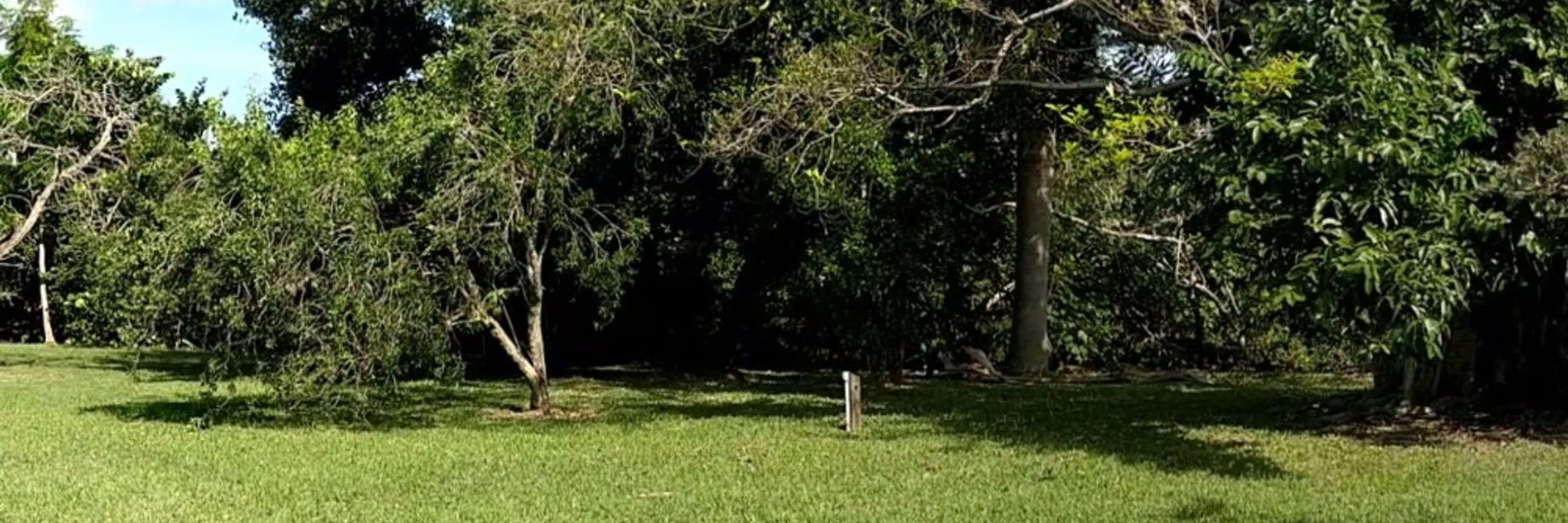
🦎🦎🦎
@gtresearch.bsky.social @gtsciences.bsky.social

🦎🦎🦎
@gtresearch.bsky.social @gtsciences.bsky.social
🦎🦎🦎

🦎🦎🦎
No better way to spend it than right here on Lizard Island with an A+ lizard catching team!! 🦎🦎🦎
Honored to be such an amazing cohort: www.packard.org/2025fellows
@packardfdn.bsky.social

No better way to spend it than right here on Lizard Island with an A+ lizard catching team!! 🦎🦎🦎
Honored to be such an amazing cohort: www.packard.org/2025fellows
@packardfdn.bsky.social
The pipeline from traits to fitness...perhaps way messier in the wild than we expect?
Nature is complicated! 🧬🦎
(14/n)
The pipeline from traits to fitness...perhaps way messier in the wild than we expect?
Nature is complicated! 🧬🦎
(14/n)
Organisms may change their behavior to avoid costly situations. Injured lizards might stay closer to refuges, rely more on crypsis, or switch habitats entirely.
To what extent does behavior act as a shield between organisms and selection pressures? 🛡️ (13/n)

Organisms may change their behavior to avoid costly situations. Injured lizards might stay closer to refuges, rely more on crypsis, or switch habitats entirely.
To what extent does behavior act as a shield between organisms and selection pressures? 🛡️ (13/n)
In other words, the strength of selection varies through time. When prey is abundant and predators scarce, losing a leg may not matter.
The three-legged lizards we found might be living during periods of relaxed selection on these traits? ⏰
(12/n)

In other words, the strength of selection varies through time. When prey is abundant and predators scarce, losing a leg may not matter.
The three-legged lizards we found might be living during periods of relaxed selection on these traits? ⏰
(12/n)
Selection acts on MULTIPLE traits simultaneously. A lizard with exceptional eyesight or camouflage might survive limb loss where others can't.
To what extent can high-quality traits in one area offset deficits in another? ⚖️
(11/n)

Selection acts on MULTIPLE traits simultaneously. A lizard with exceptional eyesight or camouflage might survive limb loss where others can't.
To what extent can high-quality traits in one area offset deficits in another? ⚖️
(11/n)
If a three-legged lizard never encounters a predator, reduced running performance might not matter. Individual fitness isn't just about traits - it's about life's contingencies and chance encounters.
What role does luck play? 🎲 (10/n)

If a three-legged lizard never encounters a predator, reduced running performance might not matter. Individual fitness isn't just about traits - it's about life's contingencies and chance encounters.
What role does luck play? 🎲 (10/n)
These three-legged lizards reveal 4 key principles about how natural selection might ACTUALLY work in the wild.
Let's break them down... 🧵👇
(some of these could be controversial)
(9/n)
These three-legged lizards reveal 4 key principles about how natural selection might ACTUALLY work in the wild.
Let's break them down... 🧵👇
(some of these could be controversial)
(9/n)
Or is it more episodic, probabilistic, and multifarious?
These three-legged survivors suggest selection may be less omnipresent than we think 🤔
(8/n)

Or is it more episodic, probabilistic, and multifarious?
These three-legged survivors suggest selection may be less omnipresent than we think 🤔
(8/n)
Some showed exaggerated body undulation (serpentine movement). Others cranked up stride frequency. Different strategies, same result: maintaining speed despite missing limbs! 📊🔬
(7/n)
Some showed exaggerated body undulation (serpentine movement). Others cranked up stride frequency. Different strategies, same result: maintaining speed despite missing limbs! 📊🔬
(7/n)
We measured sprint speed in limb-damaged lizards.
Theory predicts they should be MUCH slower, right? Shorter limbs = reduced stride length = slower speeds. That's textbook biomechanics.
Wrong! Some ran just as fast - even FASTER - than intact lizards. Wait, what?! 🏃♂️🦎
(6/n)

We measured sprint speed in limb-damaged lizards.
Theory predicts they should be MUCH slower, right? Shorter limbs = reduced stride length = slower speeds. That's textbook biomechanics.
Wrong! Some ran just as fast - even FASTER - than intact lizards. Wait, what?! 🏃♂️🦎
(6/n)
Lizard limbs are a *textbook* example of adaptation.
Decades of research show even SLIGHT differences in leg length affect sprint speed, survival, and fitness.
So lizards missing entire limbs should be... dead? Yet here they were, thriving? 🤯
(5/n)

Lizard limbs are a *textbook* example of adaptation.
Decades of research show even SLIGHT differences in leg length affect sprint speed, survival, and fitness.
So lizards missing entire limbs should be... dead? Yet here they were, thriving? 🤯
(5/n)
From geckos to iguanas, chameleons to skinks - missing feet, legs below the knee, even ENTIRE limbs. And many looked... healthy? Fat, even? 🤔
🦎
(4/n)

From geckos to iguanas, chameleons to skinks - missing feet, legs below the knee, even ENTIRE limbs. And many looked... healthy? Fat, even? 🤔
🦎
(4/n)
(3/n)

(3/n)
(2/n)

(2/n)
Let me tell you about the "three-legged pirate" lizards 🏴☠️
[Paper: www.journals.uchicago.edu/doi/10.1086/... ]
(1/n)

Let me tell you about the "three-legged pirate" lizards 🏴☠️
[Paper: www.journals.uchicago.edu/doi/10.1086/... ]
(1/n)
🦎🦎🦎
@gtsciences.bsky.social @gtresearch.bsky.social

🦎🦎🦎
@gtsciences.bsky.social @gtresearch.bsky.social
🦎🦎🦎


🦎🦎🦎
Take a look at our new Python package for reconstructing trees from point cloud data using quantitative structure models (QSM's).
Fun with @jefferybcannon.bsky.social!
ecoevorxiv.org/repository/v...

Take a look at our new Python package for reconstructing trees from point cloud data using quantitative structure models (QSM's).
Fun with @jefferybcannon.bsky.social!
ecoevorxiv.org/repository/v...
🦎🦎🦎

🦎🦎🦎



(4/4)

(4/4)
visit www.maxwell-hanrahan.org #science #philanthropy
(3/n)

visit www.maxwell-hanrahan.org #science #philanthropy
(3/n)
(2/n)

(2/n)

